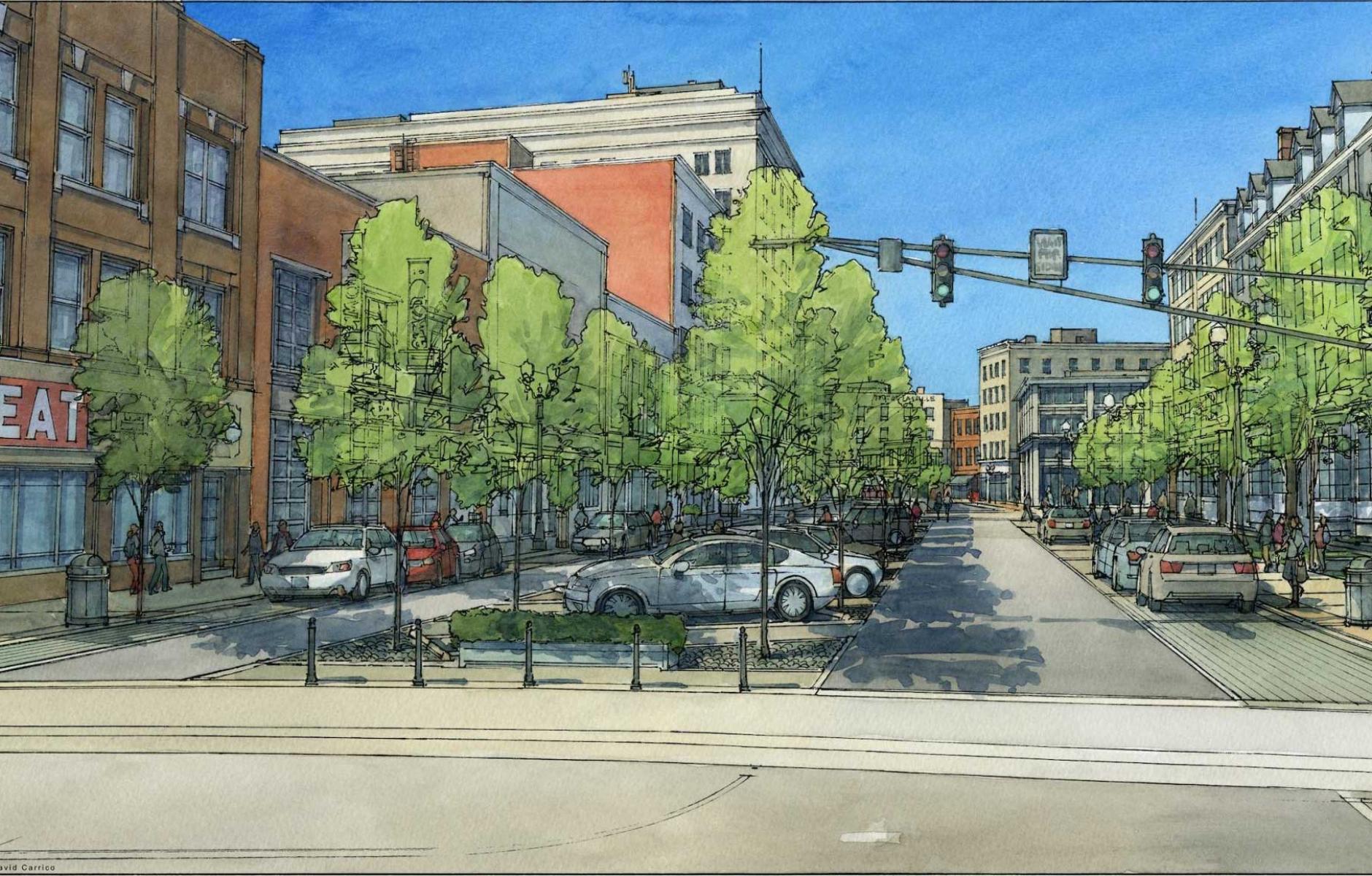
Top 10 stories of 2020
Here's the top 10 stories on Public Square in 2020. While we posted many stories covering COVID, urban unrest, and other tragic events of the year, the most widely read articles centered on urban design, housing, retail, walkability, zoning, and architecture. Even in a year when so many other issues take priority, how we build cities has a profound impact that will last long after immediate memories fade.
The top article of the year focuses on a plan for Hammond, Indiana, the town that inspired the holiday classic A Christmas Story, which our family watched again over the holidays.
Nine keys to safe downtown streets
Street life is dramatically impacted by the speed of vehicles. Whether they know it or not, most pedestrians understand in their bones that a person hit by a car going 35 mph is roughly seven times as likely to die than if the car is going 25 mph. Any community that is interested in street life—or human lives—must carefully consider the speed at which it allows cars to drive in places where people are walking. These concepts, applied to downtown Hammond, are relevant to most American cities (see rendering at top of article).
Best practices for ending exclusive single-family zoning
Your city or state just allowed—or is considering allowing—multiple units on every lot. Here are six tips for successful implementation of the Missing Middle.

Ten rules for successful storefront design
An engaging storefront starts with a vision, then good storytelling, and design that engages the community.

Facts don't support the ‘density is dangerous’ narrative
Ultimately, the pandemic will highlight how much we need to come together in the real world, and cities are a big part of that.

‘Pattern zone’ enables quality infill development
The Midtown Pattern Zone in Bryan, Texas, is designed to raise the level of design for economical infill. The zone won a merit award for the Infill Group and Miller Boskus Lack Architects in the Emerging Projects category of the 2020 CNU Charter Awards.

Is public architecture dysfunctional?
A new poll shows that Americans prefer traditional architecture to later modern styles in public buildings, and researchers are finding explanations in neuroscience.

Aging population needs walkable, bikeable cities
Seniors have the most to gain from pedestrian and cycling improvements—yet they often feel threatened by changes that provide alternatives to driving. Here are ways to include seniors in active transportation planning.

Corner stores can anchor a neighborhood
Corner stores are the smallest and most useful type of retail—here's how to make them succeed.

A model of New Urbanism in Panama
The La Fontana District, designed by Moule & Polyzoides, contrasts with sprawl and uncontrolled infill that has damaged the historic city of David, Panama. The plan won a merit award in the Emerging Projects category of the 2020 CNU Charter Awards.

The magic of urban trees
In a city like Seattle, more than 100,000 trees could be planted at intersections alone. These trees would provide enormous psychological, social, environmental, and economic benefit.





